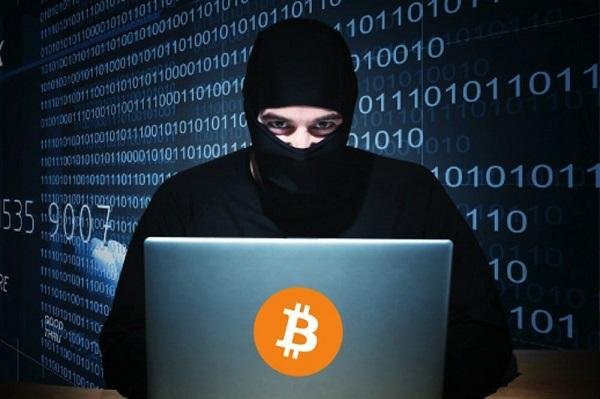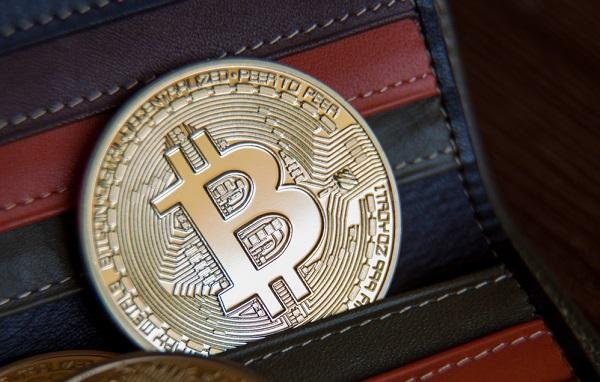How Hackers Steal Your Bitcoin and ways to minimize it.
Bitcoin hacking action can actually be done in various ways, ranging from private key theft to "phishing".
Bitcoin and crypto currencies have been shocking the world for the past 2 years. Many people flock to join the Bitcoin trend to taste the potential profits. Even though Bitcoin is built on Blockchain technology and is considered safe, the system is still vulnerable to hacking . Those who commit fraud have been able to earn billions of Dollars over the past few years.
On the other hand, users who lose their wallet crypto currency cannot do anything, because transactions on the Blockchain are:
Irreversible . When a transaction is confirmed, the transaction cannot be canceled. So even if you are a victim of fraud or hacking, no party will be responsible for returning the stolen funds.
Pseudonymous . Transactions are not connected with real identities, and all are anonymous. Even though the Wallet address is still traceable, you will never know who is the owner of the Wallet.
In fact, hackers have various ways to get into someone's bitcoin wallet and steal funds in it. Here are 6 actions that hackers might take to steal funds from your Wallet, and how you can minimize the risk.
How Hackers Steal Bitcoin
1. Stealing Private Key
The Blockchain stores all address records and a certain value which is then attached to a key, to identify each record. This key is called a Private Key or private key. So, when someone has Bitcoin, what they really have is a private key to open a record on a particular address on the Blockchain.
These keys are stored online and offline in various ways, and each has a certain level of security. However, all options remain vulnerable to theft. Often, online services (such as the Wallet provided by the crypto exchange) are responsible for storing private keys. In fact, hackers easily enter the stock database and copy all the data in it. Worse, stock hacking is often related to "insiders" who know how to enter the database.
Meanwhile, the risk of storing your private key offline can occur if you don't store it in a safe place. Losing all funds may also occur if the key that you keep offline is damaged or lost.
How to minimize risk:
If you use the Stock Wallet, make sure not to save large amounts of funds and over a long period of time. It will be safer if you only save funds when you are active in transactions. In addition, don't forget to activate 2-factor authentication, either via email or your Smartphone device.
If you save crypto offline (such as Paper Wallet), you must store it in the safest place and not prone to damage. Usually, the papper wallet risks being damaged due to obsolescence, moisture, etc. So make sure to protect it carefully.
2. Keylogger
Keylogger (short for keystroke logger ) is software that tracks or records buttons pressed on your keyboard , usually in secret so you don't know that your actions are being monitored. This is usually done with malicious intent to collect account information, important numbers, usernames, passwords and other personal data.
Keyloggers can pose a serious threat to users, because they can be used to intercept passwords and other confidential information entered through the keyboard. As a result, cyber criminals can get your private key, then use this information to get your crypto money.
Usually, there are three different options available for installing Keyloggers to the victim device, namely:
Via email attachments that can be in the form of .exe or .pdf files.
Malicious site to install software.
Share the application by uploading it on several Blockchain and Bitcoin communities.
How to minimize risk:
Because Keylogger is Malware, the best way is to make sure your Anti Virus runs normally and always get periodic updates.
Don't use a public computer (like in an internet cafe) to access your Bitcoin Wallet.
3. Fake Wallet
This option is usually done by more professional hackers. They can create fake Wallet that resembles the original Wallet, to steal all the details from the owner. ** Fake Wallet applications are usually uploaded regularly, both at the Apple Store and the Google Play Store . ** So, even though many fake wallets are blocked by the Store, hackers still regularly upload them to target less careful victims.
Bitcoin Wallet
How to minimize risk:
Visit your official Wallet website, and make sure the link in the Store is the same as the link on the official site.
Don't often switch Wallet, and make sure you only subscribe to the most experienced Wallet.
4. Bitcoin Miner Malware
The next option that might be done by hackers is to **insert some Bitcoin miner Malware into the device of its victims . **Every Bitcoin mined causes the making of new bitcoin to be more difficult. You need electricity to run and cool the mining rig. With electricity being the main operational cost for Bitcoin miners, hackers are able to borrow resources from other users or miners by slipping Malware.
How to minimize risk:
Make sure the Anti Virus used is always On and get periodic updates.
Always scan with Anti Virus when the computer suddenly slows down after accessing a suspicious site.
Don't download and install anything from suspicious sites.
5. Phishing
Phishing is a form of fraud by disguising fake pages , through the extraction function of login credentials or account information from the victim. Usually, this method also uses fake websites or emails with attractive lure. Phishing is popular among cyber criminals because it is much easier to do, and usually less careful victims will enter the trap.
How to minimize risk:
Make sure to use Anti Virus or additional security extensions for your browser.
Make sure the site has "https:" at the beginning of the link.
Don't click suspicious links either from e-mails or forums that usually have promotional frills.
6. Posing as a Bitcoin Receiver
Another option for hackers is disguising themselves as recipients of Bitcoin. Lately, most Bitcoin hacking occurs when companies hold a fundraising event in the form of an ICO (Initial Coin Offering) that asks investors to send Bitcoin to them. Smart hackers can disguise themselves as companies that are holding an ICO. Once Bitcoin is transferred, there is no way to return it .
How to minimize risk:
If you want to invest in ICO, be sure to always check all the details: Whitepaper, team, development, GitHub, etc.
Be sure to search for all relevant information from various leading forums.
In the tips above, storing crypto online in a safe place is one of the best solutions. In addition to the exchange, you can use e-payments that already accept Bitcoin, such as PayPal, whose security can be proven.


